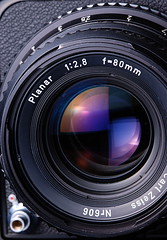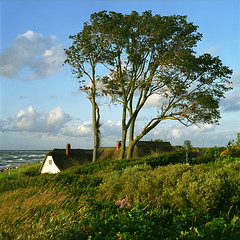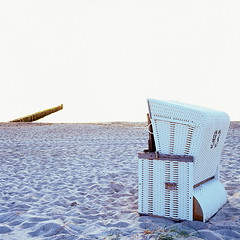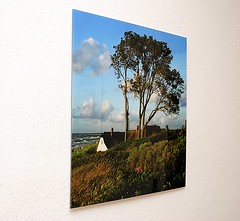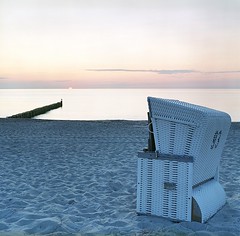Usually, equivalent lens focal length tables use the diagonal angle of view as a reference (for example comparing medium format lens focal lenghts to other formats). This does not make sense as one needs to consider both, the image's length and width if one wants to capture a similar image! It makes a large difference if you want to end up with a square image or an aspect ratio of 3:2. You cannot take a similar photo with a different film's aspect ratio unless you crop.
Even worse, the popular page at photo.net has a few conversion errors in its calculations (probably wrong metric conversion factors). Moreover, it gives its results with a misleading and irrelevant precision of one position after the decimal point and does not show the results for 645 and 6x7 film!
Therefore I provide the following table, which gives different equivalent 35mm focal lenghts for popular 6x6 lenses (first columns) and different aspect ratios you want to end up with (larger focal lenght are rounded).
Even worse, the popular page at photo.net has a few conversion errors in its calculations (probably wrong metric conversion factors). Moreover, it gives its results with a misleading and irrelevant precision of one position after the decimal point and does not show the results for 645 and 6x7 film!
Therefore I provide the following table, which gives different equivalent 35mm focal lenghts for popular 6x6 lenses (first columns) and different aspect ratios you want to end up with (larger focal lenght are rounded).
| 6x6 Medium Format Focal Length (mm) | 35mm film 1:1 | 35mm film 5:4 | 35mm film 4:3 | 35mm film 3:2 |
| 40 | 17 | 21 | 22 | 25 |
| 50 | 21 | 26 | 28 | 32 |
| 60 | 25 | 32 | 34 | 38 |
| 75 | 32 | 40 | 42 | 48 |
| 80 | 35 | 42 | 45 | 50 |
| 150 | 65 | 80 | 85 | 95 |
| 250 | 105 | 135 | 140 | 160 |
| 300 | 130 | 160 | 170 | 190 |
Let's take two examples: You want a square image and use a 80 mm lens on a 6x6 camera. You need a 35 mm lens for a 35mm camera (because you have an 24 mm x 24 mm image instead of 56 mm x 56 mm, this yields a factor of 3/7).
However, if you use the same 80mm lens on your medium format camera and do not want a square image but plan to crop it with an 3:2 aspect ratio, you need an 50 mm equivalent focal length for the 35mm film format. The frequently made comparison of medium format's 80mm with 35mm format's 50 mm lens is only valid if you want to have image with a 3:2 aspect ratio!
So essentially, you have two very popular lenses in one with your 80 mm lens on a square format! You have a wide and a normal lens. The same is true for your 150 mm lens: you have both, a long normal (65 mm equiv.) and a short tele lens (95 mm). Moreover, you will not encounter any sharpness or resolution problems when a medium format image is cropped to 3:2.
So essentially, you have two very popular lenses in one with your 80 mm lens on a square format! You have a wide and a normal lens. The same is true for your 150 mm lens: you have both, a long normal (65 mm equiv.) and a short tele lens (95 mm). Moreover, you will not encounter any sharpness or resolution problems when a medium format image is cropped to 3:2.
This table also shows how popular 35mm prime focal lenghts might have developed. For example, 150mm lenses are often considered as portrait lenses in medium format and the aspect ratio of 4:3 is also very popular with portraits. It requires a little cropping with both, medium and 35mm format. Now let's look at the column of the equivalent 35 mm focal length at 4:3. It's 85 mm, a very popular portrait focal length with 135 cameras! I am sure the manufacturers made the same calculations in recent times!
Similar calculations probably led to the also popular wide angle focal lengths of 28 mm and 35 mm (also in the 4:3 column).
If you have a 6x4.5 camera, you can simply use the first column for your medium format lenses and the 4:3 column for the 35mm equivalent, but as 6x4.5 is not exactly 4:3 but 112:83 (because it is 56 mm x 41.5mm), you can also use the following, more precise table which also comprises other popular focal lenghts.
| 6x4.5 Medium Format Focal Length (mm) | 35mm film 1:1 | 35mm film 5:4 | 35mm film 112:83 | 35mm film 3:2 |
| 35 | 20 | 20 | 20 | 22 |
| 75 | 43 | 43 | 43 | 50 |
| 120 | 70 | 70 | 70 | 77 |
| 150 | 85 | 85 | 85 | 95 |
The following table relates to 6x7 cameras (70mm x 56 mm image) with their respective frequently available focal lengths.
| 6x7 Medium Format Focal Length (mm) | 35mm film 1:1 | 35mm film 5:4 | 35mm film 4:3 | 35mm film 3:2 |
| 43 | 18 | 18 | 19 | 22 |
| 50 | 21 | 21 | 22 | 25 |
| 65 | 27 | 27 | 29 | 33 |
| 80 | 35 | 35 | 36 | 41 |
| 150 | 65 | 65 | 70 | 80 |
| 210 | 90 | 90 | 95 | 110 |
As 645 and 6x7 are not square formats, they also need to be cropped in order to become square. Therefore the equivalent 35mm focal length is the same as in their native aspect ratio.
